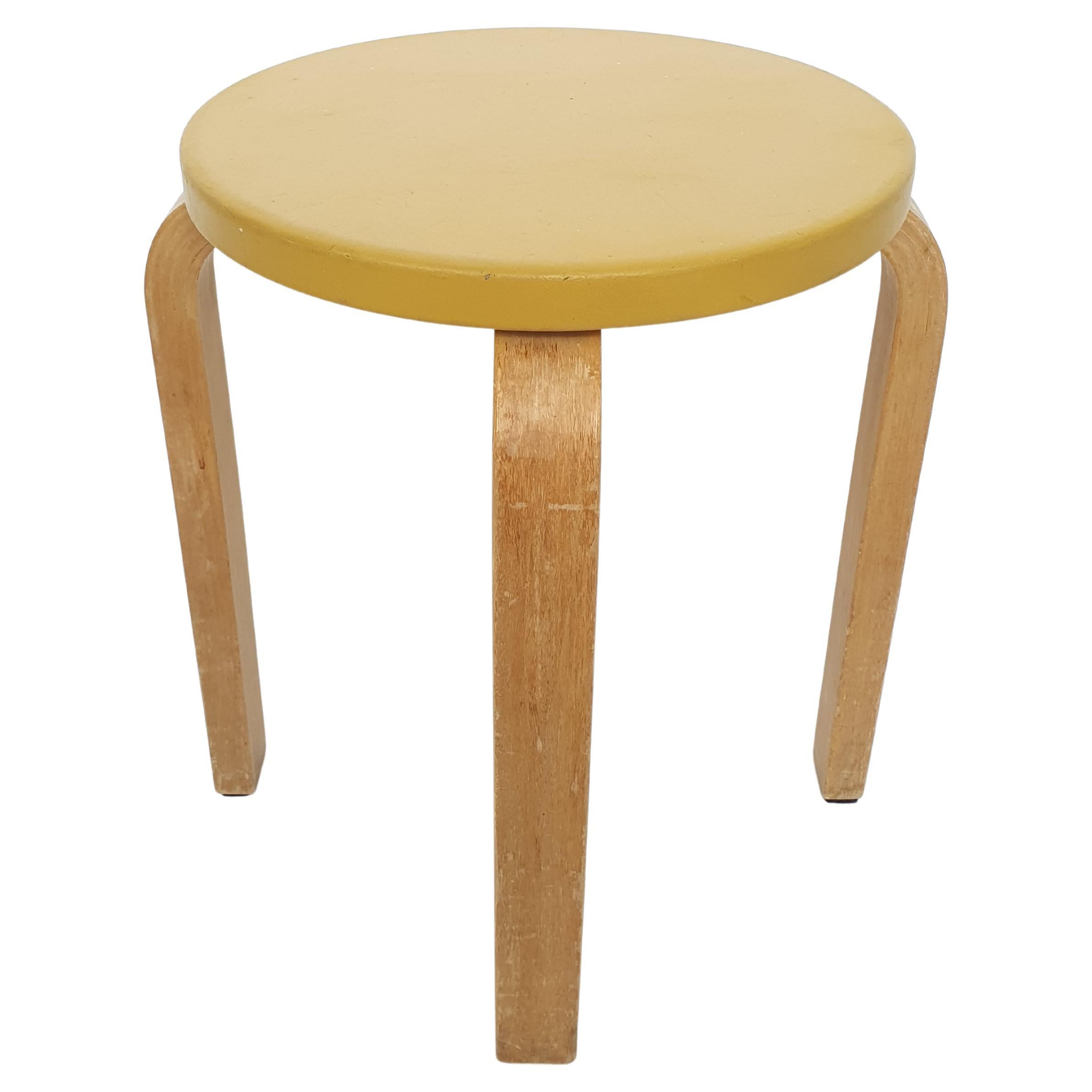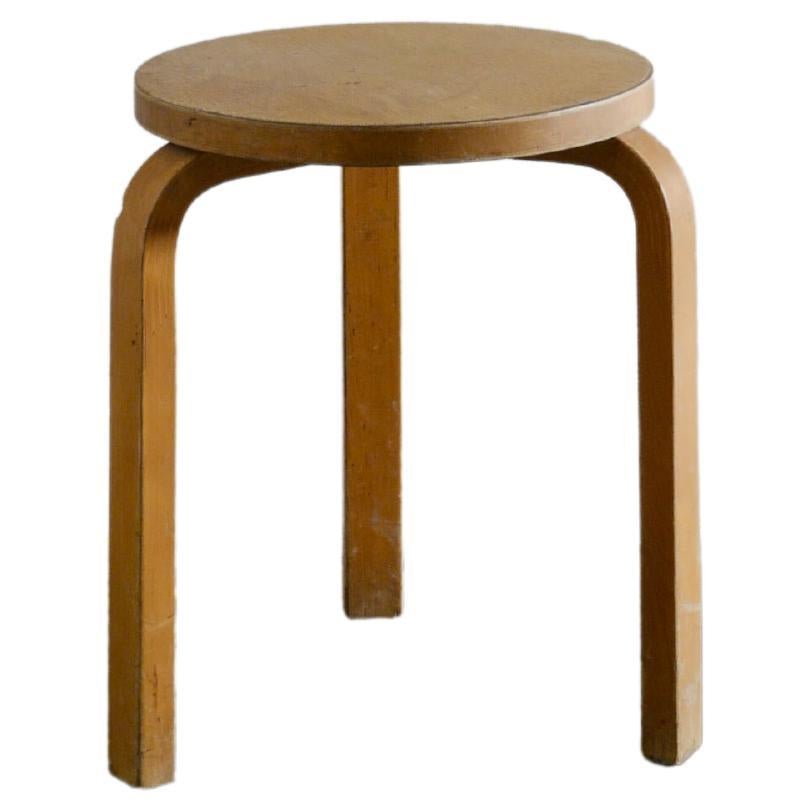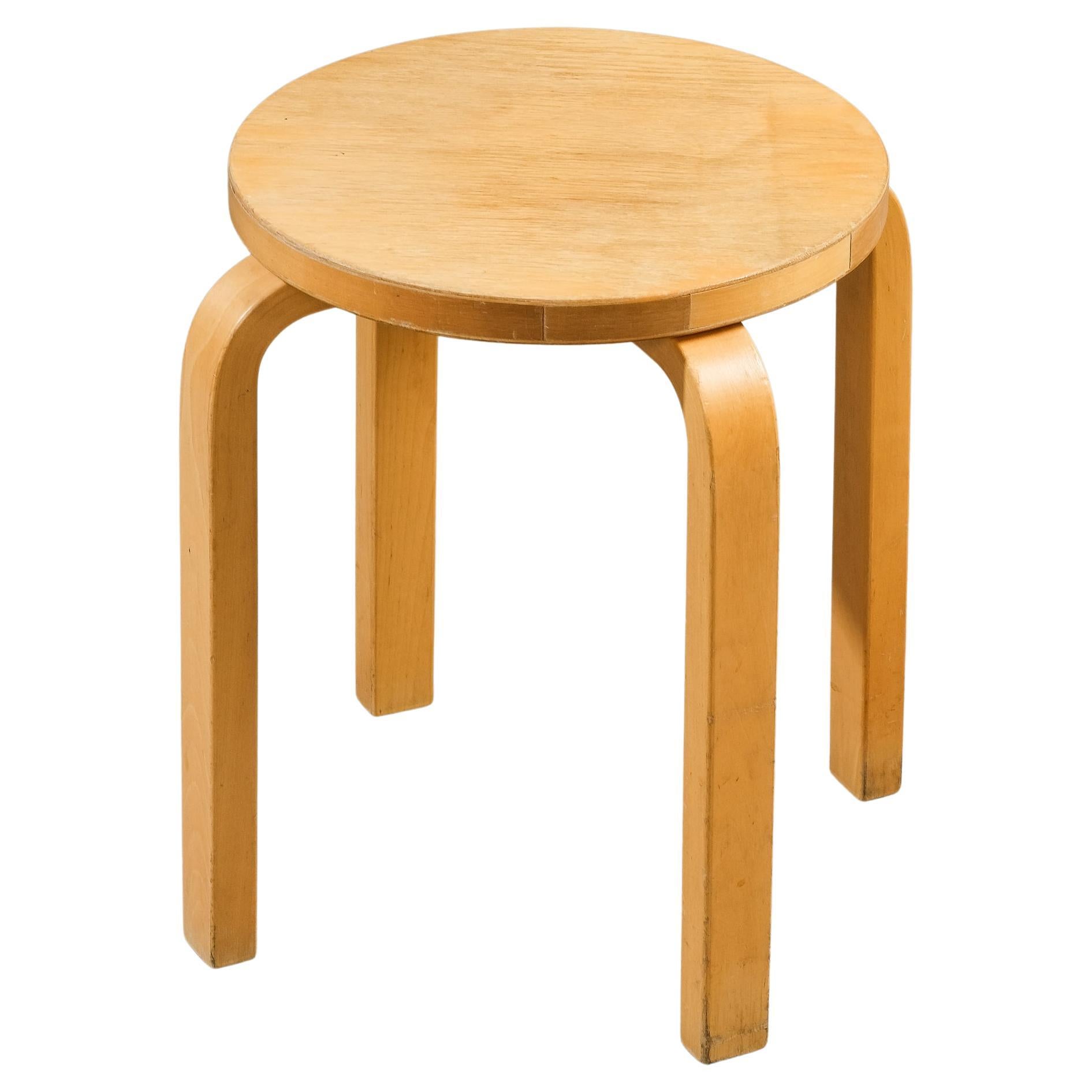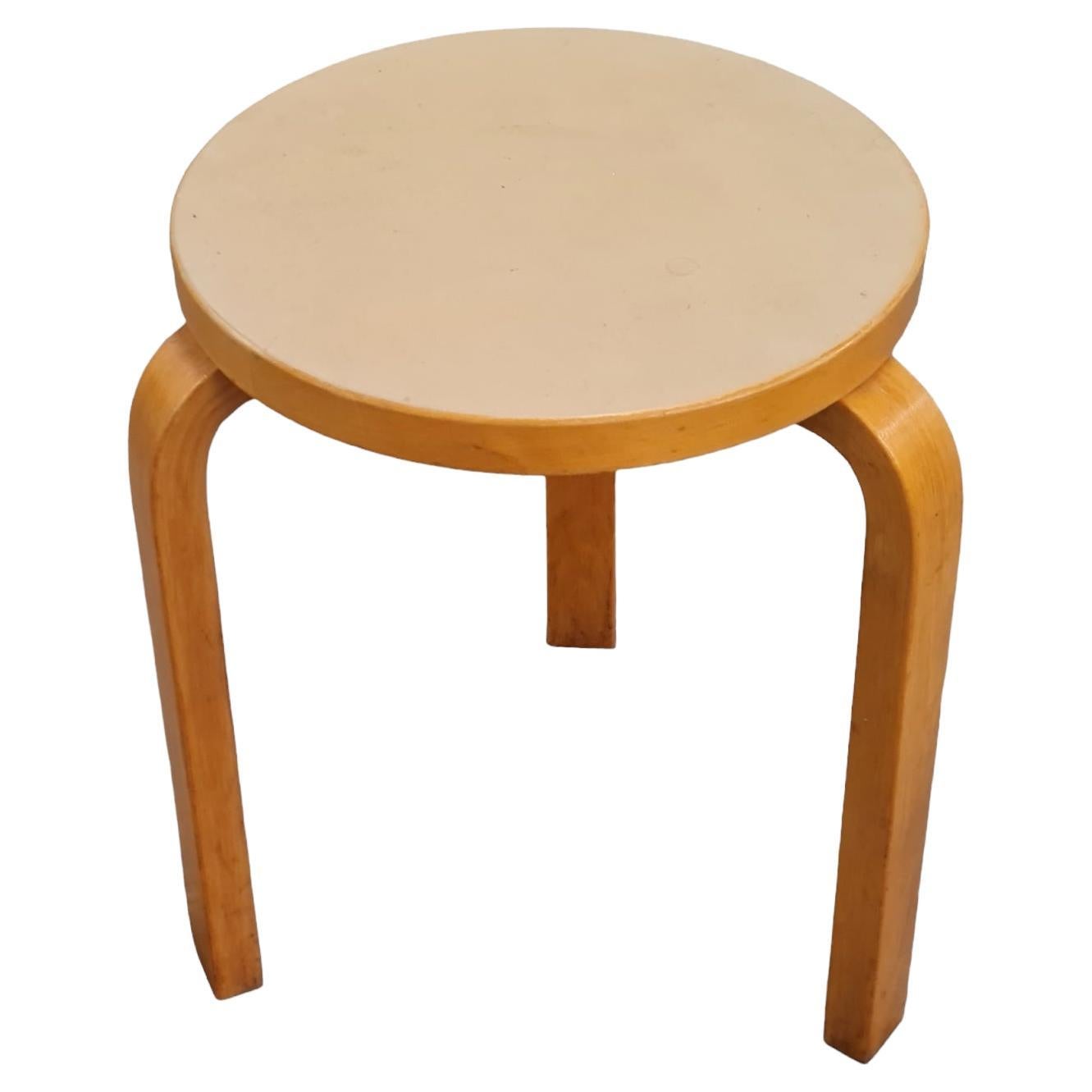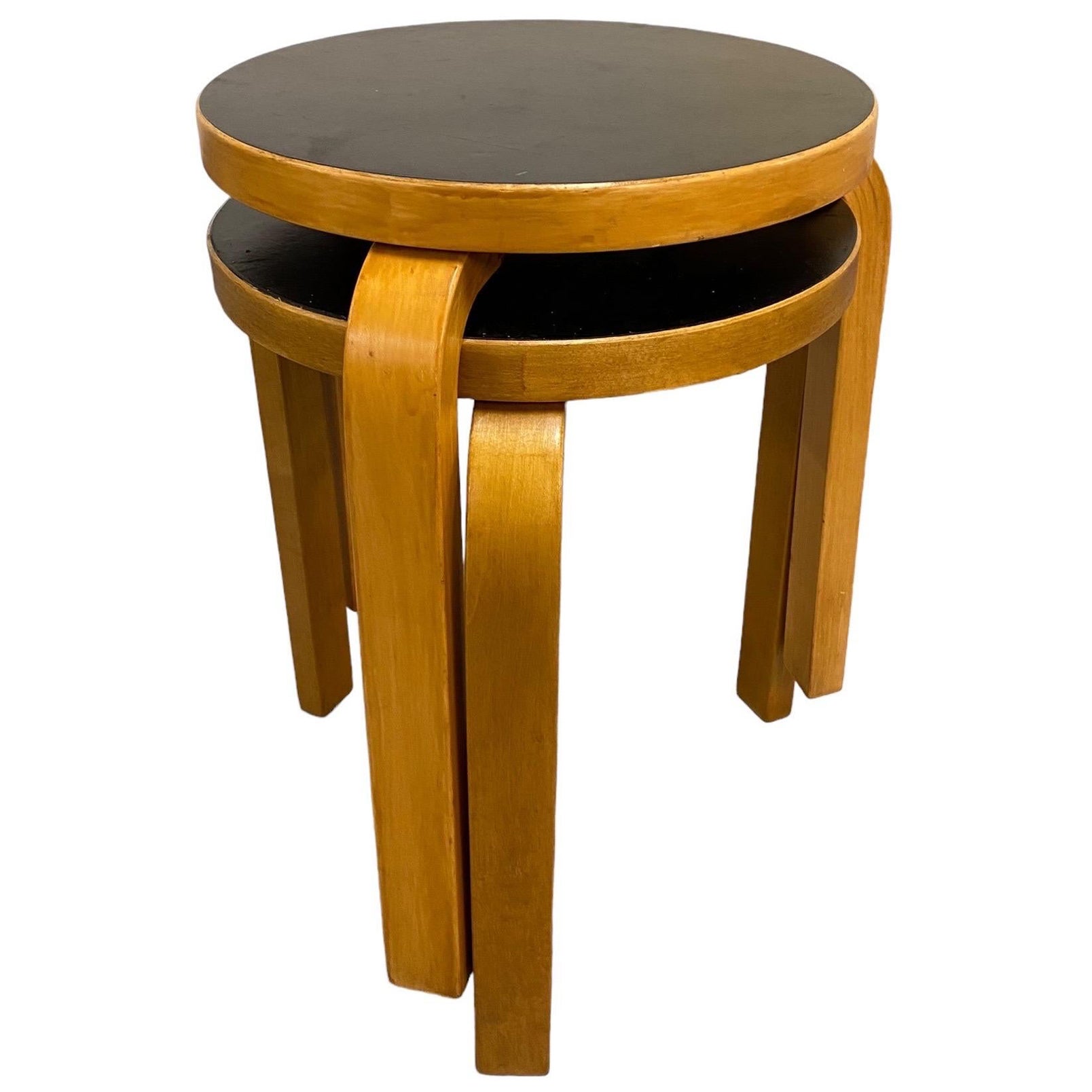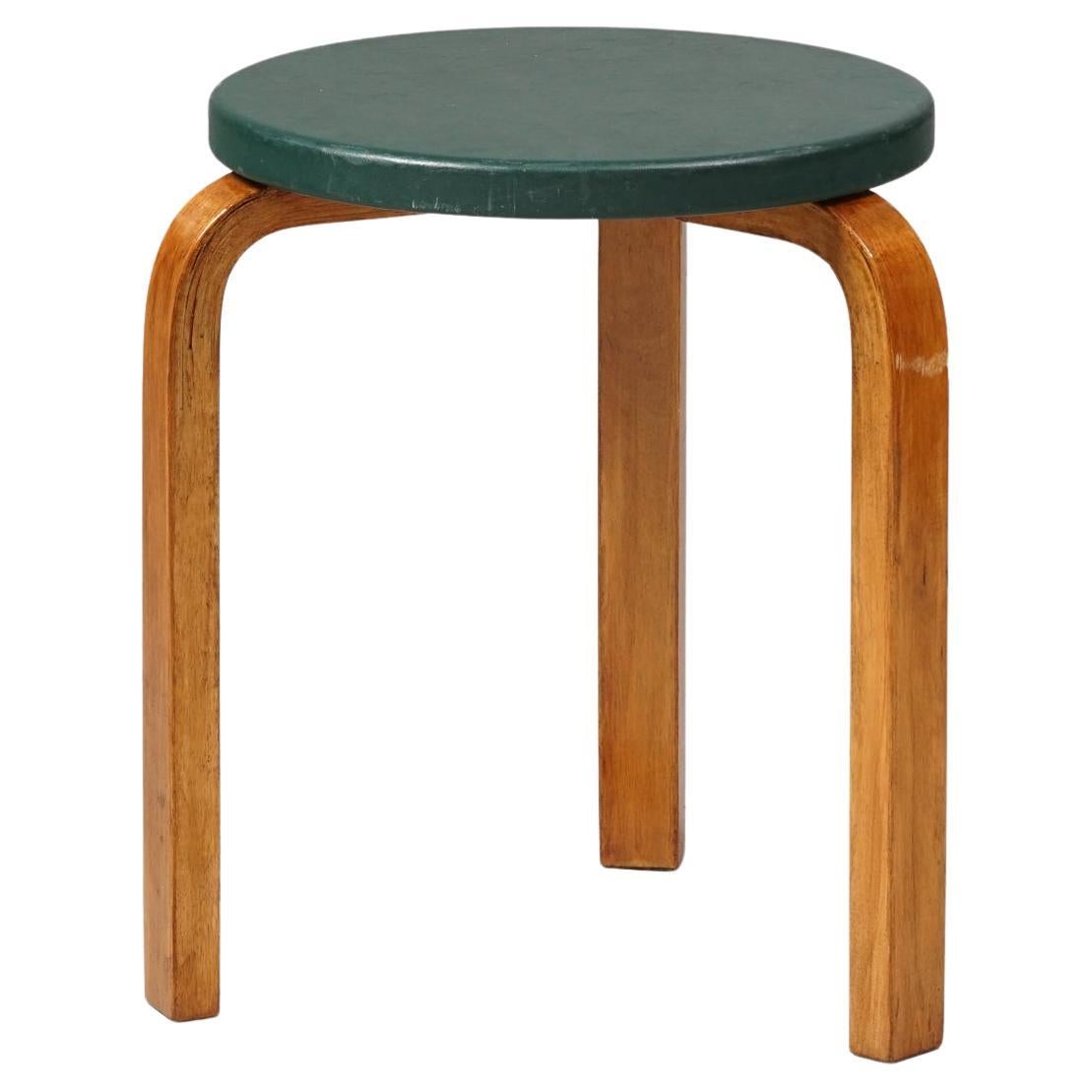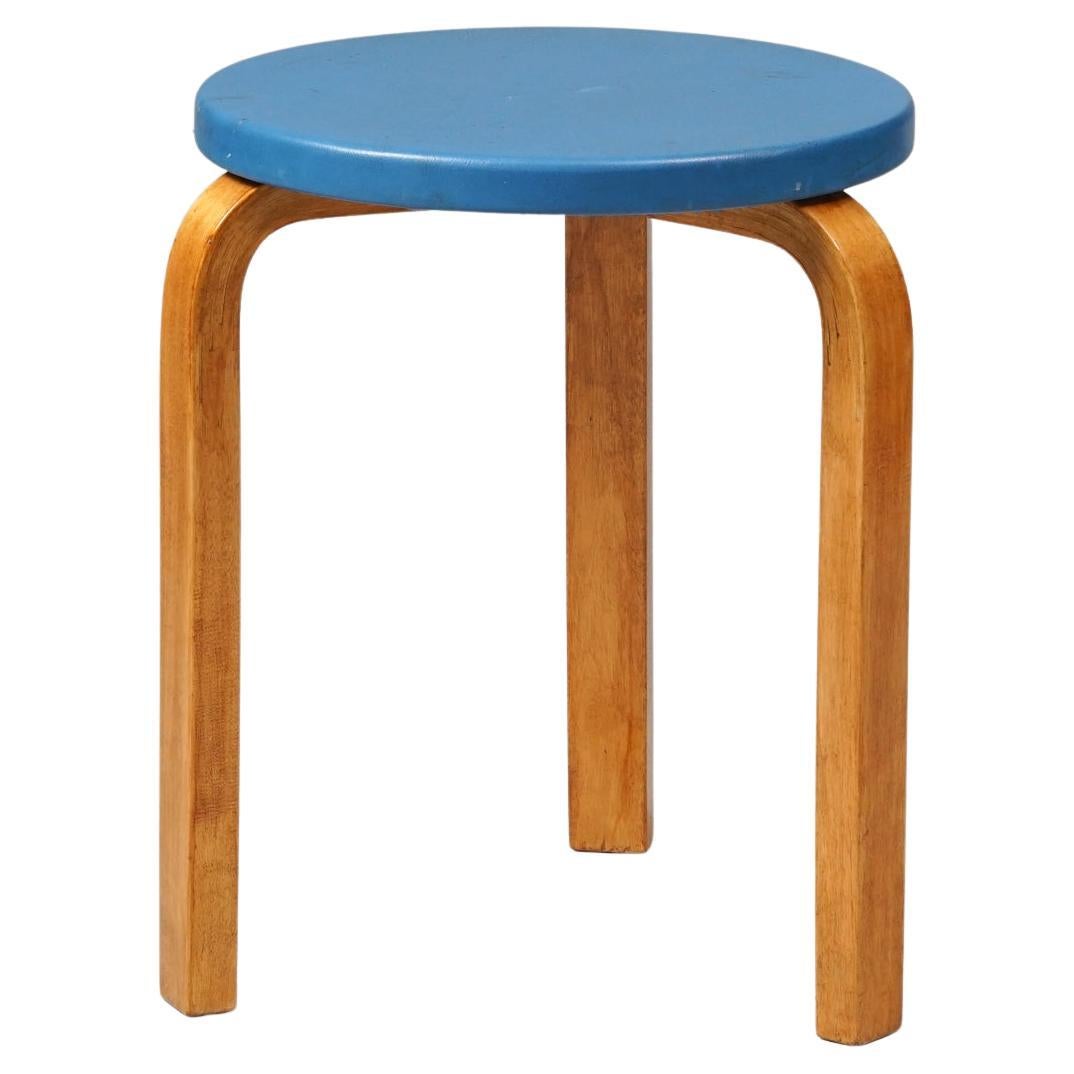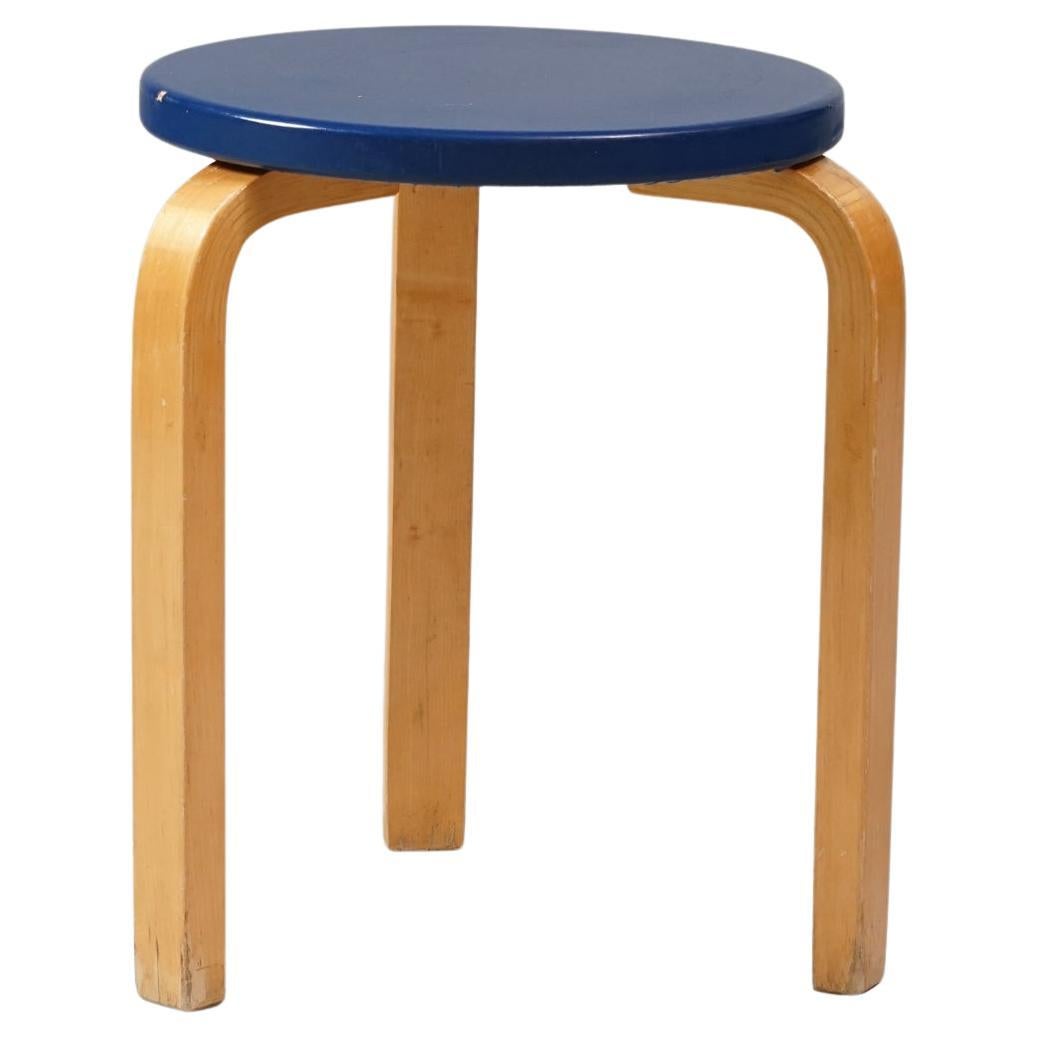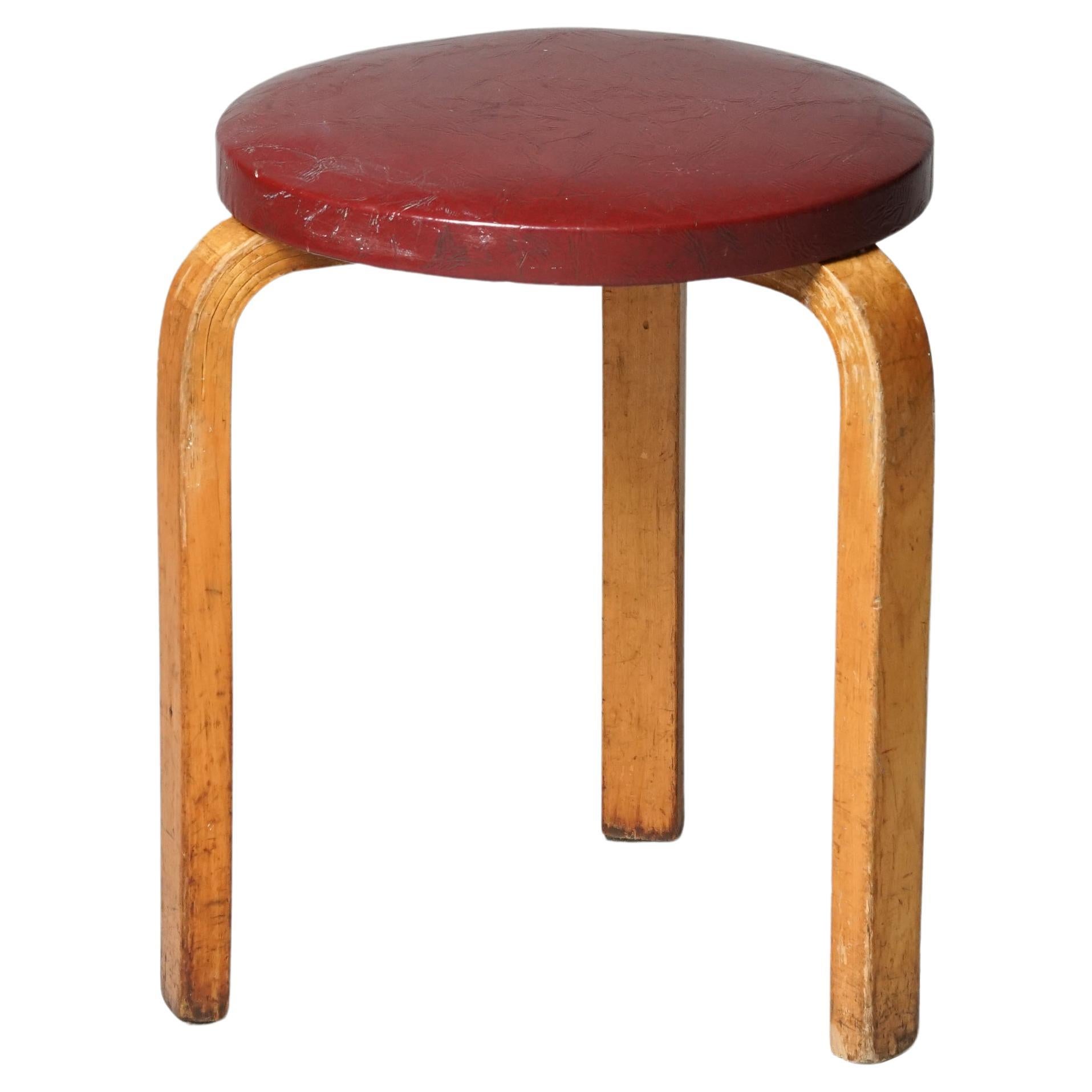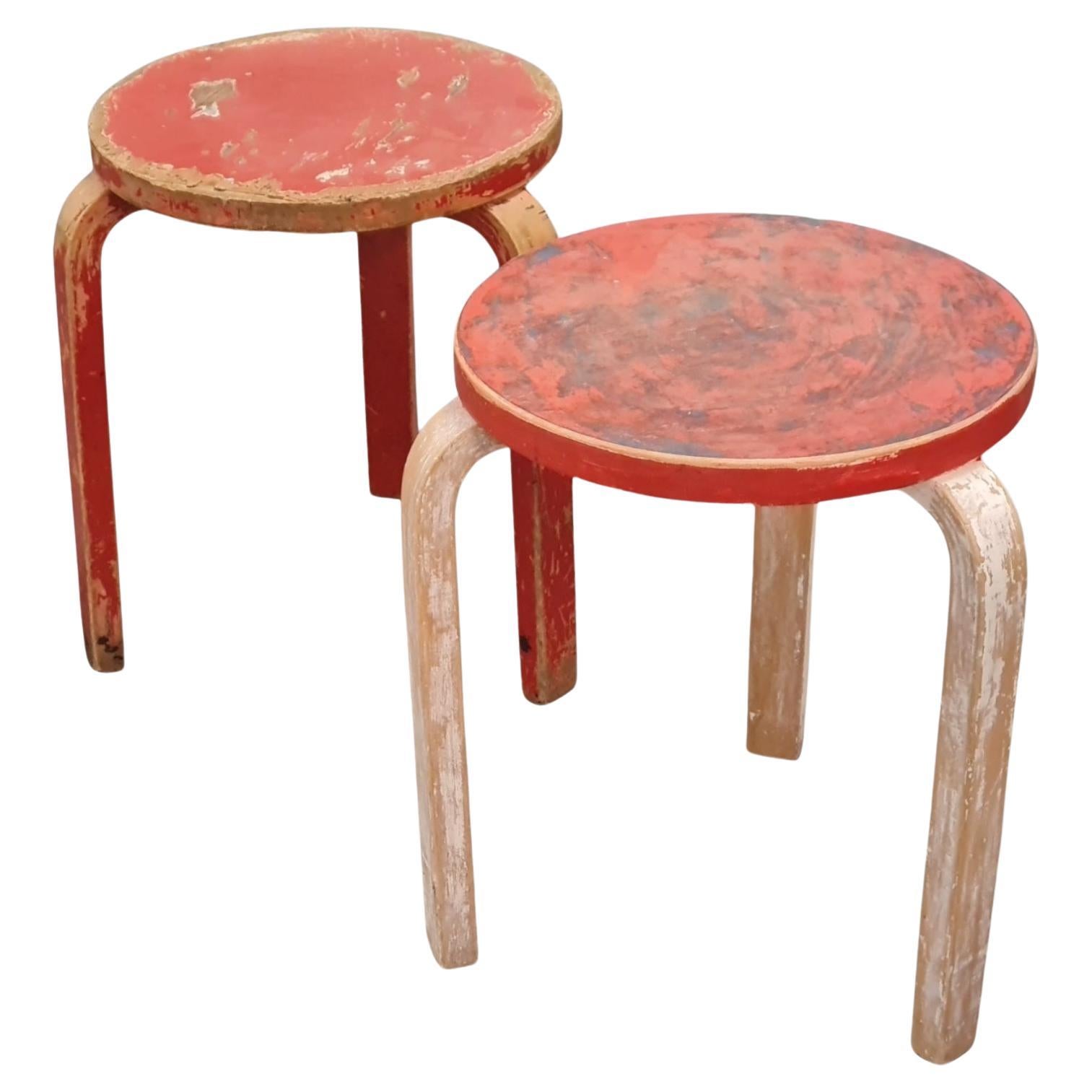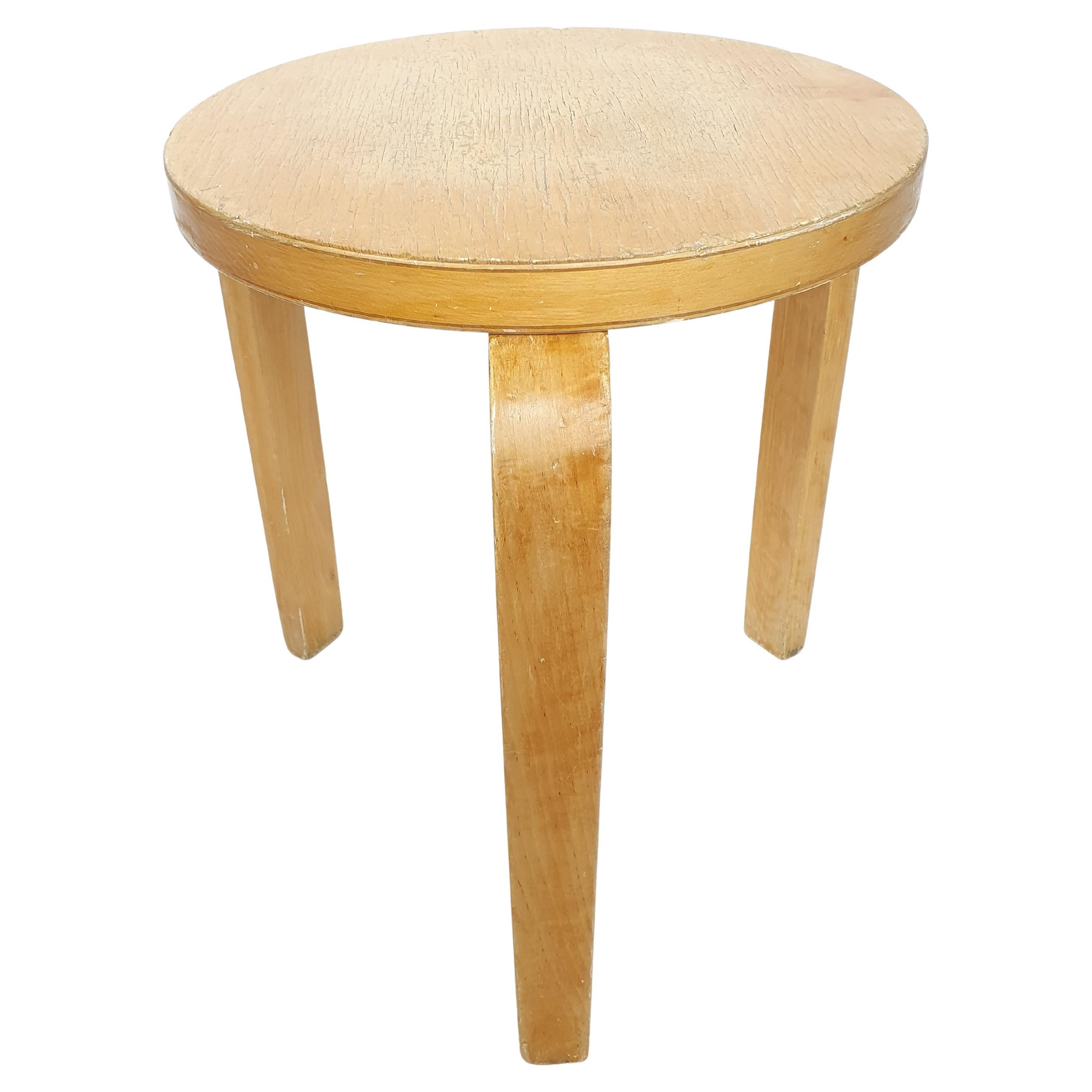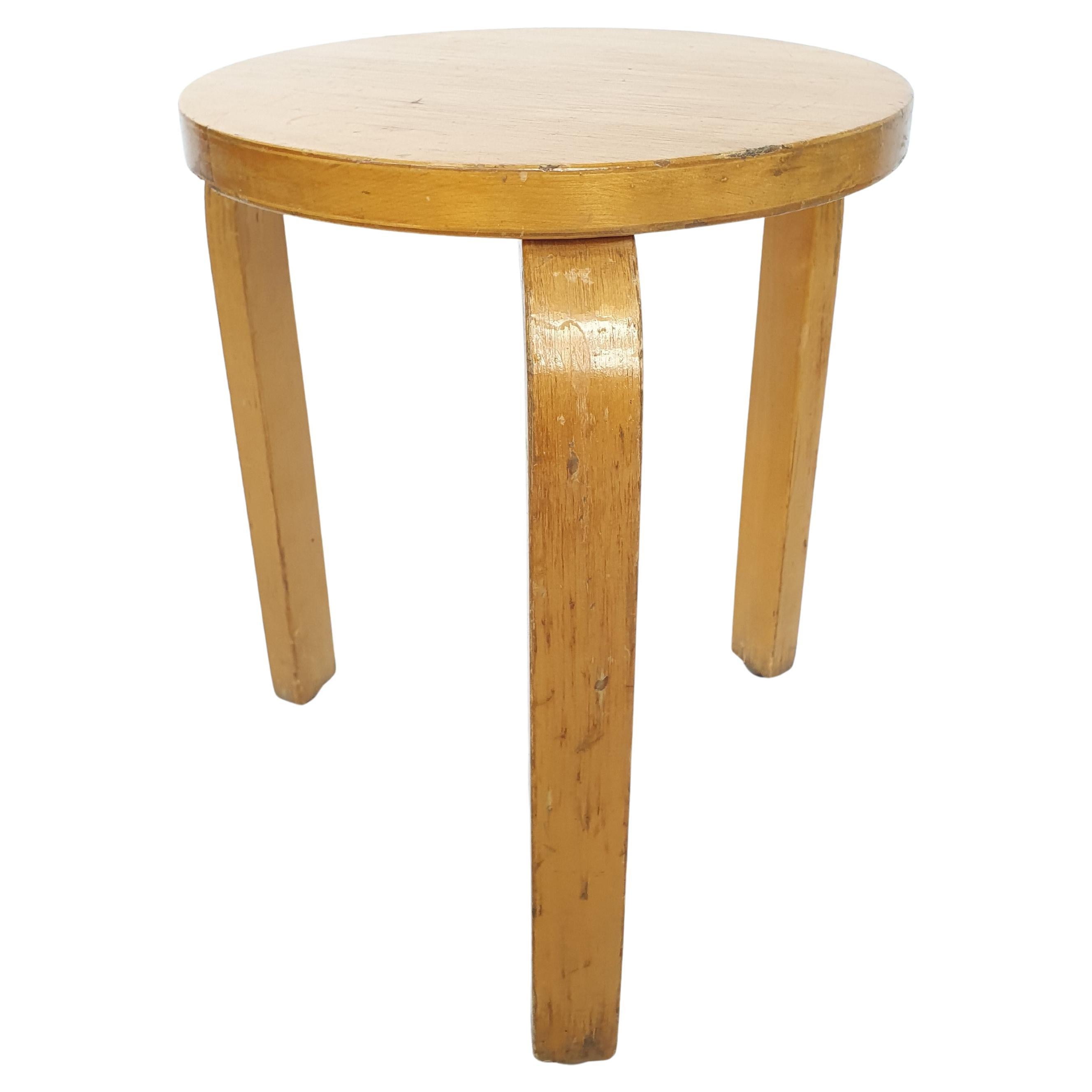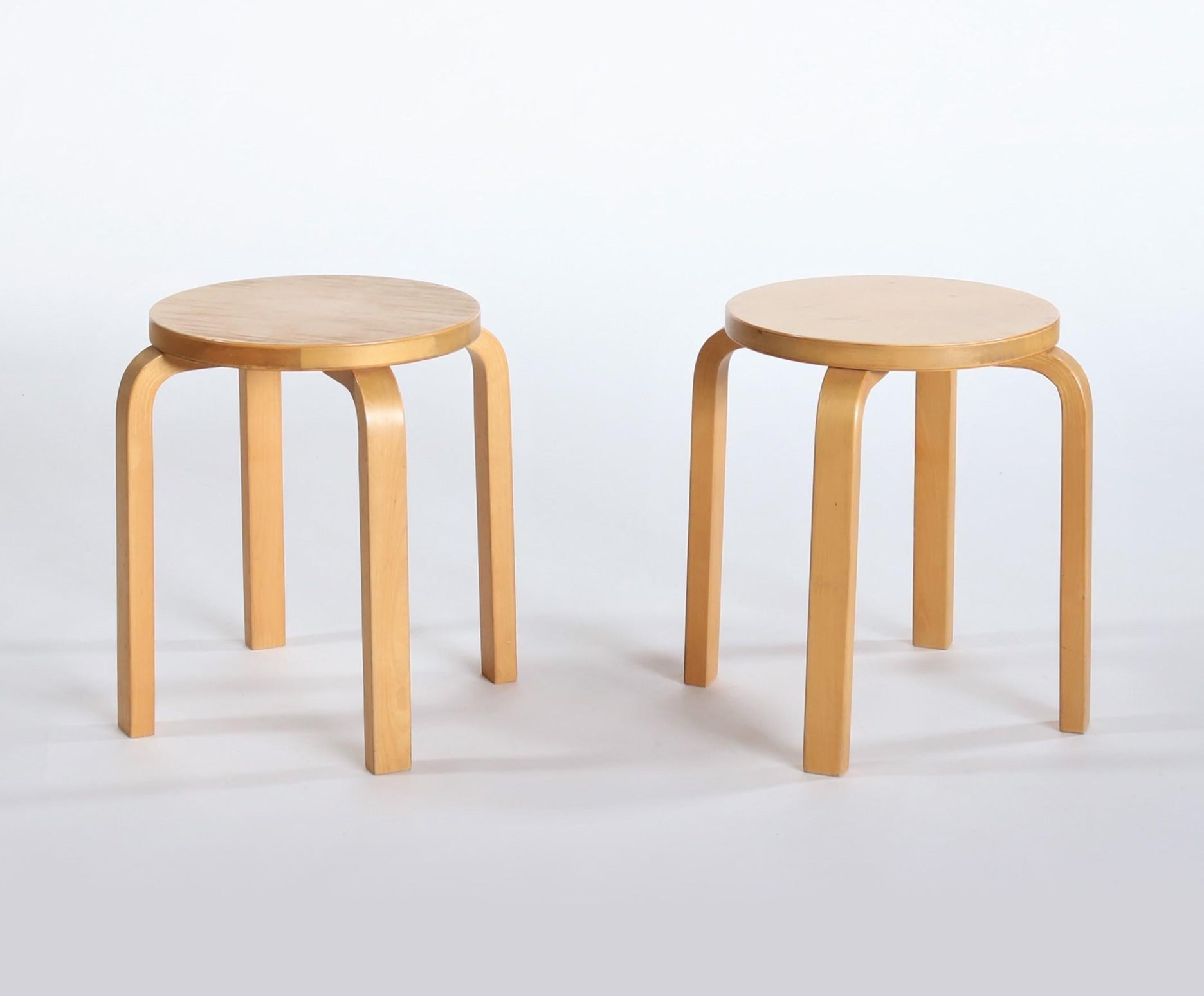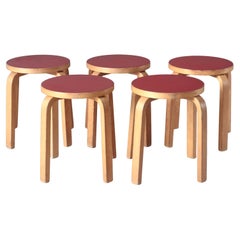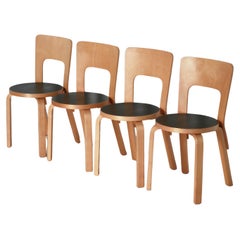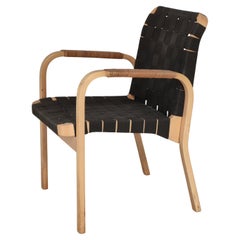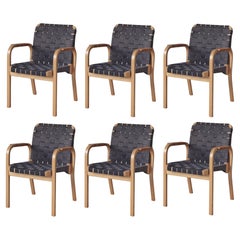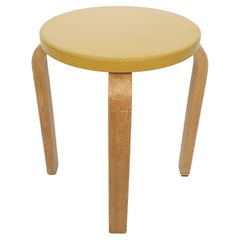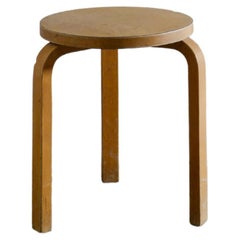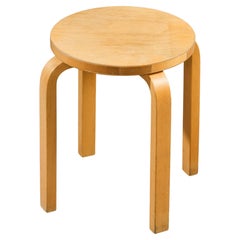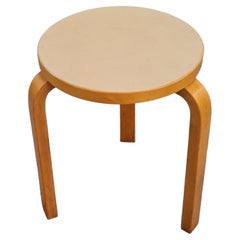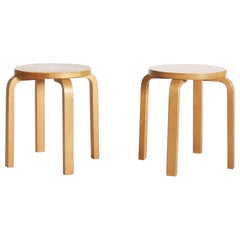
Vintage Alvar Aalto Stools Model E60 in Laminated Birch by Artek, Finland
View Similar Items
Vintage Alvar Aalto Stools Model E60 in Laminated Birch by Artek, Finland
About the Item
- Creator:Alvar Aalto (Designer),Artek (Maker)
- Design:Stool E60L-Leg Series
- Dimensions:Height: 17.72 in (45 cm)Diameter: 16.15 in (41 cm)Seat Height: 17.72 in (45 cm)
- Sold As:Set of 2
- Style:Scandinavian Modern (Of the Period)
- Materials and Techniques:Birch,Laminated
- Place of Origin:
- Period:
- Date of Manufacture:circa 1970
- Condition:Wear consistent with age and use. Great vintage condition. Faded stamp from manufacturer underneath each stool ("Alvar Aalto/ARTEK/Made in Finland").
- Seller Location:Odense, DK
- Reference Number:1stDibs: LU3793118320392
Stool E60
Alvar Aalto’s Stool E60, designed in 1933, followed a period of fruitful experimentation for the Finnish architect and furniture maker, who has over the years earned a wealth of accolades for his architecture and design projects. Some were solo projects but many were collaborations with his first wife, Aino, who was also a designer and architect.
Aalto (1898–1976) helped establish Scandinavian modernism’s lofty place in the design world. This particular style — popularized in the United States during the 1950s by the likes of Danish furniture makers Finn Juhl and Arne Jacobsen — emphasized traditional craftsmanship and furniture making with practicality and affordability in mind. For Aalto, armchairs, such as the lightweight birchwood Hallway armchair he designed with Aino, were to be developed in concert with ergonomics, so that backrests and seats were crafted to respond specifically to the human form.
The Aaltos’ Hallway armchair was part of the Paimio Sanatorium project — a functionality-first facility in the rural Finnish city of Paimio designed by the couple to treat tuberculosis patients. The Aaltos not only created the modernist buildings that held the facility, but also the elegant furnishings and interiors, from top to bottom. Some of the furniture featured an integration of tubular steel, which reflected the influence of legendary designer Marcel Breuer, a pivotal force in the Bauhaus school’s development.
Aalto had Breuer’s furniture in his own apartment but later complained that steel too easily conducted heat and reflected light. He shifted toward making bentwood furniture as a result of working with natural materials native to Finland, an economically appropriate direction given that more than 70 percent of the country is covered by forests.
Alvar Aalto’s stackable Stool E60 — a four-legged variation of the three-legged Stool 60 — is made of solid birch and birch plywood. He’d intended the Stool 60 for an innovative municipal library he designed while working on the sanatorium with Aino.
Toiling alongside fellow craftsman Otto Korhonen at a furniture factory during the 1920s, Aalto devised the “bent-knee” technique, which sees solid birch softened in water, sawed in a series of places that run parallel to the wood grain and strengthened with thin slats of wood glued into the resulting grooves. A heating process follows that renders the wood malleable. This method gave way to the “L-leg” that would be utilized as supports for his Stool E60, which is made today by Artek, a company that the Aaltos helped cofound.
Alvar Aalto
An architect and designer, Alvar Aalto deserves an immense share of the credit for bringing Scandinavian modernism and Nordic design to a prominent place in the global arena. In both his buildings and his vintage furniture — which ranges from chairs, stools, tables and lighting to table- and glassware — Aalto’s sensitivity to the natural world and to organic forms and materials tempered the hardness of rationalist design.
Relatively few Aalto buildings exist outside Finland. (Just four exist in the United States, and only one — the sinuous 1945 Baker House dormitory at M.I.T. — is easily visited.) International attention came to Aalto, whose surname translates to English as “wave,” primarily through his furnishings.
Instead of the tubular metal framing favored by the Bauhaus designers and Le Corbusier, Aalto insisted on wood. His aesthetic is best represented by the Paimio armchair, developed with his wife, Aino Aalto, in 1930 as part of the overall design of a Finnish tuberculosis sanatorium.
Comfortable, yet light enough to be easily moved by patients, the Paimio chair’s frame is composed of two laminated birch loops; the seat and back are formed from a single sheet of plywood that scrolls under the headrest and beneath the knees, creating a sort of pillow effect. Aalto’s use of plywood had an enormous influence on Charles and Ray Eames, Arne Jacobsen, Marcel Breuer and others who later came to the material.
Concerned with keeping up standards of quality in the production of his designs, Aalto formed the still-extant company Artek in 1935, along with Aino, whose glass designs were made by the firm. In the latter medium, in 1936 the Aaltos together created the iconic, undulating Savoy vase, so-called for the luxe Helsinki restaurant for which the piece was designed.
Artek also produced Aalto pendants and other lighting designs, many of which — such as the Angel’s Wing floor lamp and the Beehive pendant — incorporate a signature Aalto detail: shades made of concentric enameled-metal rings graduated down in diameter. The effect of the technique is essential Alvar Aalto: at once precise, simple, and somehow poetic.
Find a collection of vintage Alvar Aalto stools, vases, dining tables and other furniture on 1stDibs.
More From This Seller
View AllVintage 1930s Finnish Scandinavian Modern Stools
Birch
Vintage 1960s Finnish Scandinavian Modern Side Chairs
Birch
Vintage 1940s Finnish Scandinavian Modern Armchairs
Linen, Birch
Vintage 1940s Finnish Scandinavian Modern Armchairs
Linen, Birch
Vintage 1950s Danish Scandinavian Modern Lounge Chairs
Wool, Birch
Vintage 1960s Finnish Scandinavian Modern Lounge Chairs
Leather, Beech
You May Also Like
Vintage 1960s Finnish Scandinavian Modern Stools
Faux Leather, Birch
Vintage 1940s Finnish Scandinavian Modern Stools
Birch
Vintage 1970s Finnish Scandinavian Modern Stools
Birch
Vintage 1950s Finnish Scandinavian Modern Stools
Birch
Vintage 1930s Finnish Scandinavian Modern Stools
Fabric, Birch
Vintage 1950s Finnish Scandinavian Modern Stools
Faux Leather, Birch
Recently Viewed
View AllRead More
The Very Modern Love Story of Mid-Century Design Duo Alvar and Aino Aalto
A power couple before the term existed, the influential pair made work that still resonates today.
What Makes Scandinavian Modernism and Nordic Design So Irresistible?
Andrew Duncanson, founder of the Stockholm- and London-based gallery Modernity, weighs in on the masters of mid-century furniture and decorative arts.
